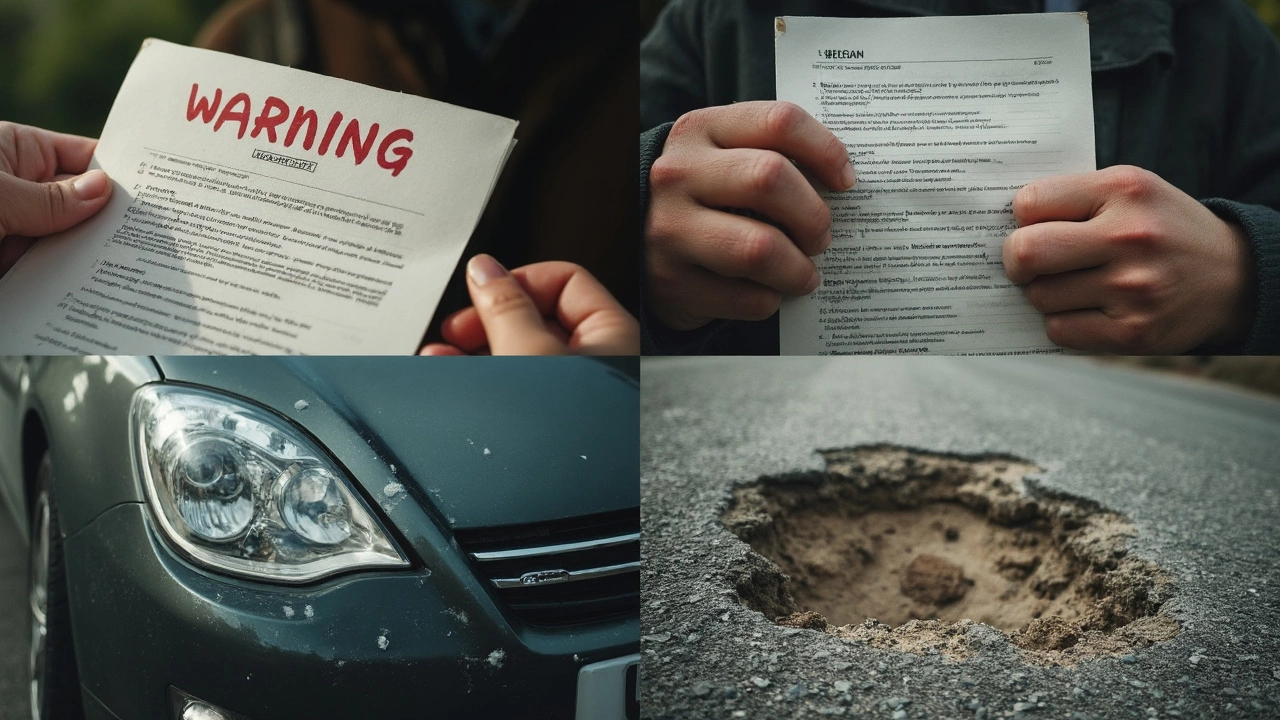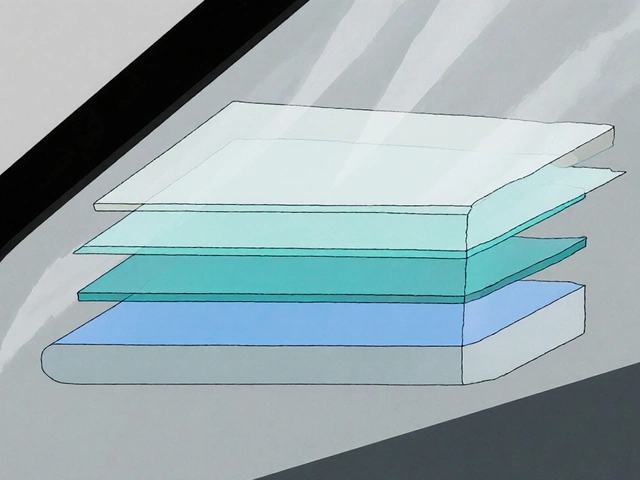Ever get that urge to slam your ride, make your wheels hug the arches, and roll through town looking like you just escaped a car show? Lowered cars grab attention fast—they look sleek, aggressive, and perfectly sculpted. But there’s more to this story than just killer street style. Drop your car a few inches, and you start playing a real-life game of “What will I scrape next?” This isn’t just about curb appeal; lowering your car brings a trunk-load of trade-offs. You might be picturing tight cornering and head-turns at every traffic light, but you could also be signing up for a world of daily headaches (and maybe a lighter wallet). So, what’s lurking beneath the surface when you go low?
How Lowering Affects Ride Comfort and Everyday Driveability
The promise before you start is almost irresistible—a lower center of gravity, better handling, killer looks. But here’s the punchline: lowered cars often ride harsher than your grandma’s old wooden rocking chair. When you lower a car, the shortened springs have less travel. That means the suspension can’t soak up bumps and potholes the way it was designed. Instead, you feel each imperfection drilling straight through the seat into your spine.
It goes deeper. Modern roads aren’t flat, and cities love using speed bumps or random patches of crumbling asphalt that turn everyday driving into a mini obstacle course. Leave your driveway too quickly and—wham!—the front bumper scrapes. Catch a hidden pothole downtown or zip over railroad tracks, and you’ll hear metal-on-asphalt music you never signed up for. Even drive-throughs and parking lot ramps become mini-mountains.
If you’re using stiff aftermarket springs or coilovers, your teeth might rattle when you hit a manhole cover at city speed. And this isn’t just “annoying but cool.” There are reports of drivers dealing with constant back pain from the jolts, especially on road trips or city commutes. No surprise—suspensions are tuned for comfort and safety from the factory for a reason.
Then there’s the tire noise. Since lowering often means swapping to lower-profile tires, you lose the sidewall that acts as a cushion. You hear and feel every stone and crack. And let’s not forget that harshness puts more wear on your suspension bushings, shocks, and even those expensive custom wheels you dropped your last paycheck on.
Performance: Where Lower Isn’t Always Better
There’s a myth that a lower car automatically handles better. In reality, dropping your car can do more harm than good—especially if you don’t dial in the geometry. Cars are designed with a certain suspension travel, camber, and toe settings in mind. Mess with that and your front tire wear could go from normal to zero-to-bald in just a few thousand miles. Not to mention, suspension components like shocks, strut mounts, and ball joints can be put under abnormal stress, increasing your risks of failure.
Let’s talk about handling. While it’s true that lowering the chassis can reduce body roll, the added stiffness and disrupted suspension travel often end up making a car less predictable. On a track, when you dial everything in just right, you might see lap time gains. But on the street, that extra stiffness makes you bounce, skip, and lose traction on rough surfaces. Ever see a lowered car hop over a sudden bump on the freeway while the original version just glides over it? Not what you want when you need control most.
Then there’s ground clearance. Once lowered, your car’s underbody, exhaust, oil pan, or even the fuel lines hang dangerously close to speed bumps and random debris. Anything lower than stock is a gamble. Hit something hard enough and you’re not just dealing with an ugly scrape—you could knock a hole in your oil pan, and that’s an instant ticket to roadside misery (plus a major engine repair bill).
And there are lesser-known side effects too. For example, lowering can interfere with your car’s aerodynamics, especially if you don’t install proper front splitters or underbody panels. Sometimes, the air that should flow smoothly underneath gets blocked, actually making your drag worse. Enthusiasts running significantly lowered cars have sometimes measured reduced top speed compared to stock, thanks to increased wind resistance and turbulence under the body.

Wear and Tear: What Goes Wrong Over Time
If you’re thinking about resale value or the long game, there’s even more to chew on. Lowering brings premature wear not just to obvious parts like shocks and bushings, but also to axles, driveshafts, and even chassis mounting points. Remember, these weren’t designed to handle the new angles and forces a dropped ride introduces.
Check out a real-life example: a study by the AAA Foundation found that fully custom-lowered cars were five times more likely to need new bushings, steering tie rods, and replacement shocks compared to factory height siblings in the first three years of ownership. That’s a lot of shop time. Plus, because the geometry is off, your tires might start to wear out on one edge way faster than normal. That’s not just ugly—it’s a waste of money and can make emergency stops more dangerous.
Then’s there’s the fun of living with a car that’s always at risk of bottoming out. Road debris, speed bumps, and steep driveways wreak havoc on your underbody. You’ll get more rock chips, crushed splash guards, and dented exhaust parts. Repairing or replacing these parts gets old fast (not to mention expensive).
Let’s not forget alignment problems. Lowered cars almost always need a four-wheel realignment, often more than once, to correct the extreme camber or toe changes. If you skip it, your steering might feel darty or wander at highway speed. Ever had a steering wheel that pulls left, while your car wants to go right? That’s your daily driving reality after a bad drop job.
Here’s a quick look at potential repairs and their ballpark costs for lowered cars, compared to a stock setup:
| Component | Stock Car (Avg. Lifetime) | Lowered Car (Avg. Lifetime) | Repair/Replacement Cost |
|---|---|---|---|
| Shocks/Struts | 60,000 miles | 30,000 miles | $400 - $1,200 |
| Suspension Bushings | 80,000 miles | 40,000 miles | $300 - $700 |
| Tires | 40,000 miles | 20,000 miles | $450 - $900 |
| Exhaust System Damage | Rare | Occasional | $300 - $1,000 |
| Alignment | Once per 15,000 miles | Twice as often | $100 - $250 |
Insurance, Legality, and Police Attention
Here’s a twist that surprises a lot of car lovers: insurance companies aren’t big fans of extreme mods. Drop a car outside of the manufacturer’s range, and your insurer could hike your premium or even deny claims if you’re not up front about modifications. Some companies straight-up refuse coverage, especially if you’ve removed or altered core safety equipment.
Worse, in some states or countries, riding too low gets you tickets—or, if you’re really unlucky, gets your whole car impounded. Regulations like the dreaded “minimum ride height” or rules about placing reflectors and bumpers at certain heights come into play. In 2016, California Highway Patrol famously ran a crackdown on “stanced” vehicles, writing hundreds of citations in a single weekend for ride heights below spec. Imagine picking up your car from impound, plus a hefty bill and legal headache, just for an extra inch of low.
Ever been pulled over even though you were going the speed limit? Cops are likely to take extra interest if your suspension setup looks extreme. In addition to tickets, some departments actually can require you to pass a safety inspection before getting back on the road.

Tips for Minimizing Problems (If You Still Want to Go Low)
Okay, so the drawbacks are real—but some folks just can’t resist the look. If you’re committed, here are a few battle-tested ways to live the low life without hating your car:
- Invest in high-quality coilovers rather than cheap lowering springs—they let you control ride height and damping, and many are engineered for daily driving.
- Always get a four-wheel alignment after lowering your car. A proper alignment helps keep tire wear balanced and the car stable at speed.
- Consider adjustable control arms. They let you dial back wild camber so you don’t shred your tires in 10,000 miles.
- Keep tire sidewall height in mind. Some folks run lower, but a little bit of sidewall can save your wheels and your spine.
- Don’t ignore warning sounds—clunks, scraping, or rubbing might mean something’s working loose or already damaged.
- Ask your insurance provider specifically about suspension mods before you buy. Document everything, and keep parts receipts handy for future claims.
- Stay within legal ride height limits. Any lower, and you risk major headaches with the law and at inspection time.
- Shop for ramps or boards if you’ve got a steep driveway—sounds silly, but it can save your bumper (and pride) every morning.
And maybe the best tip? Talk with local car owners or club members who daily-drive lowered cars in your area. The advice you get from someone who braves those same potholes, that same weather, and knows what the city police are looking for—worth its weight in gold. Dropping your ride is a trade-off, plain and simple. The look is tough to beat, but the downsides are very real. Weigh your options, do the homework, and don’t let style leave you stranded or broke on the side of the road.






